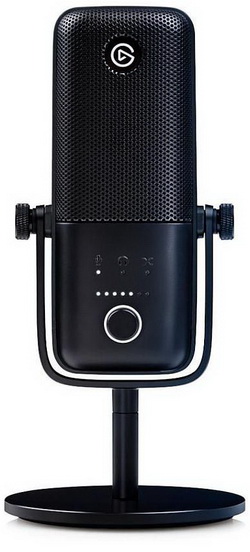INTRODUCTION

USB microphones may have reached new popularity heights mainly because of all the video streamers and content creators out there today but owning one is never a bad idea, especially if you happen to use your PC for audio and/or video calls with applications like Skype and/or Viber. However just like with any other PC peripheral in the market choosing the right USB microphone to cover your needs is not the easiest task, not when there are numerous manufacturers of such devices in the market, both old and new. And even the amount of available choices was not enough the different features and specifications each model packs only makes things harder. Elgato really needs no introductions and since they just launched their latest Wave line of USB microphones i just had to check their top model out.
Elgato is the leading provider of hardware and software for content creators, leveraging decades of experience to develop widely-accessible products that empower all creators to produce high-quality, professional content. A leader in game capture, Elgato offers four powerful game capture cards, the Stream Deck controller, and accompanying software that enables creators to easily record, upload, and livestream professional content. Designed in Germany and California, Elgato products are distributed by major retailers in over eighty countries around the world. In July 2018, Elgato was acquired by CORSAIR, and remains a separate brand within CORSAIR.
Elgato just released the Wave:1 and Wave:3 USB microphones (USB-C to be precise) both of which are based on the condenser design which Elgato has tuned for speech (in cooperation with seasoned sound engineers and recording professionals from LEWITT Audio) by using a tight cardioid polar pattern (this means that both Wave microphones are designed to pick sound primarily located in front of them). Aside their very similar design both Wave models also share several specifications and features between them including a max bit depth of 24-bit, 17mm electret capsules, frequency response of 70Hz-20KHz, -25dB sensitivity, max SPL of -120dB, dynamic range of 95dB (115dB with clipguard enabled), Elgato's proprietary clipguard technology (thanks to a second audio channel at reduced volume you can get as loud as you'd like without worrying about the end result), real time monitoring (sound is routed directly to the headphone output), PC audio return via USB (sound is routed into the built-in headphone port), enhanced low-cut filter (cuts out all frequencies under 80Hz thus reducing audio distortion), internal pop filter (clearer audio), headphone output, control dial, mute button, steel grille and a heavy duty desk stand. Still the higher-end Wave:3 model does pack several improvements including a maximum sample rate of 96Khz (compared to the 48Khz of the Wave:1), top capacitive mute button (touch sensitive), larger size and extra controls for input gain, mic and PC monitor crossfade. So, on paper the Wave:3 may be the dream USB microphone for streamers but let's see if that's really the case.

 O-Sense
O-Sense







.png)

